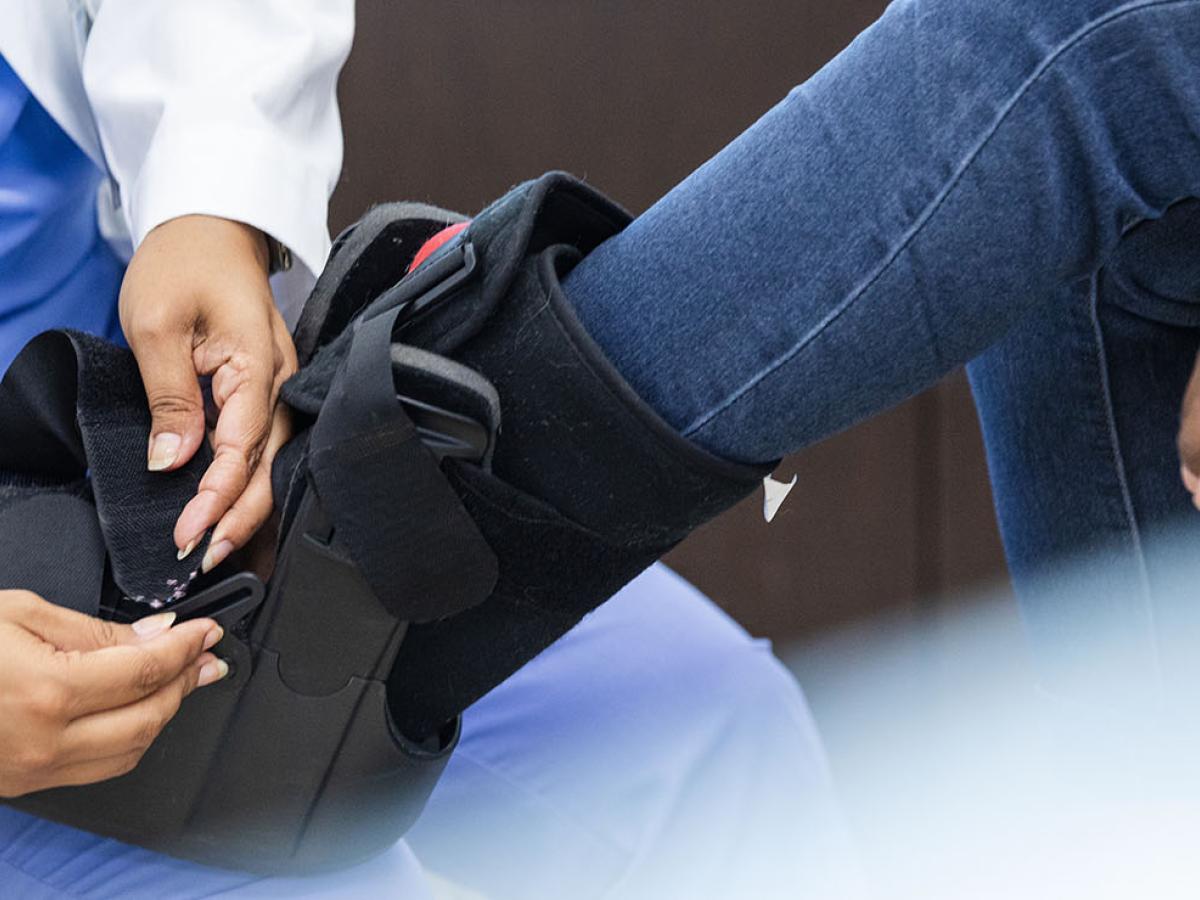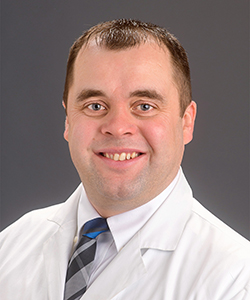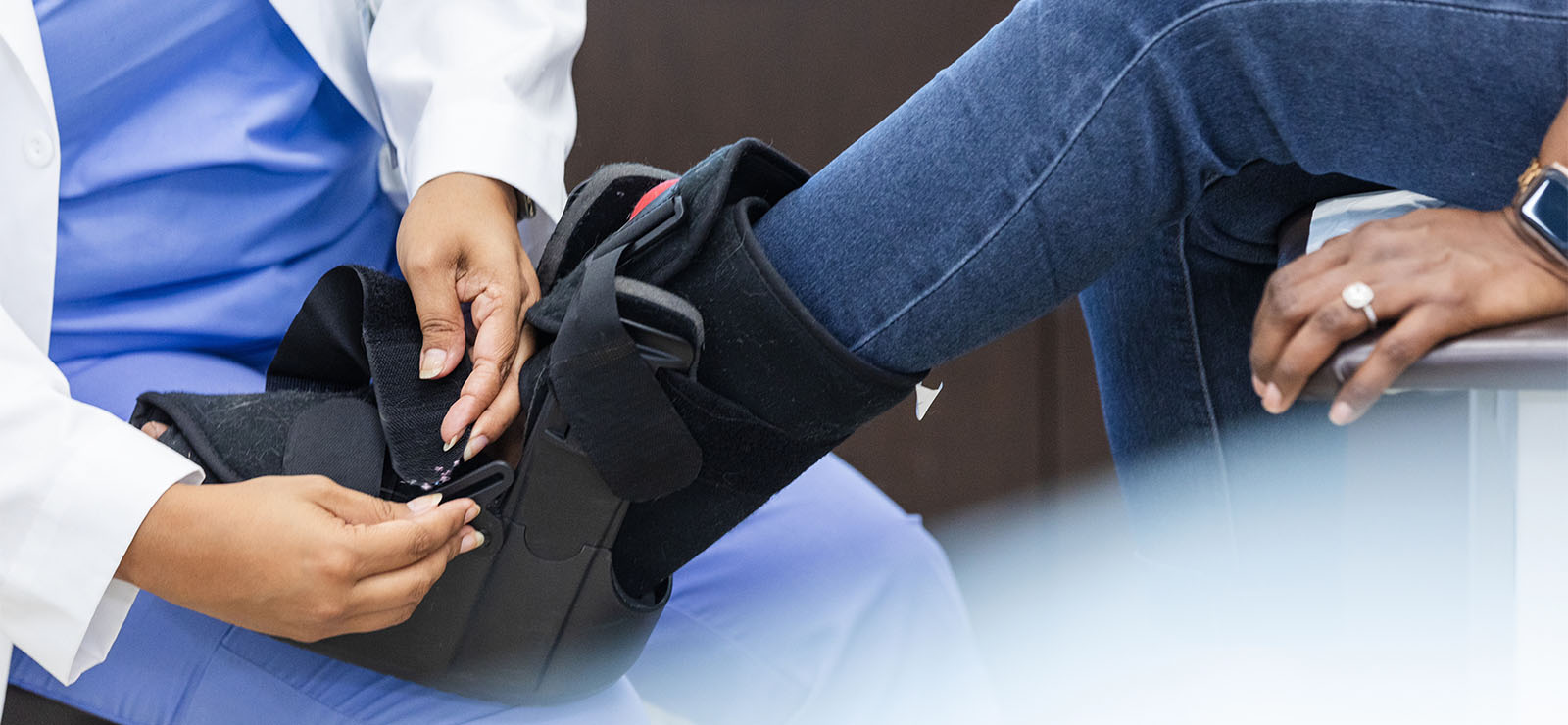July 22, 2024

Everyone knows that bones are the foundation of our body, giving it shape, support and protection. But bone health tends to take a back seat — until one breaks.

Poor bone health can lead to osteoporosis, a disease marked by weakened bones and an increased risk of fractures. “Part of the challenge with bone health and osteoporosis is that it’s a silent disease, and we don’t feel it as we age,” says David Freeze, an MU Health Care nurse practitioner specializing in orthopaedics. “By the time we catch it, it’s usually too late to do much about it.”
The key is prevention, and prioritizing bone health throughout life is the best way to prevent osteoporosis.
Freeze shares how taking care of your bones now — whatever your age — can make a big difference later:
How to Make Your Bones Strong
Keeping your skeleton healthy is like maintaining the structure of your house. If the foundation, walls or roof are compromised, everything inside is at risk.
“The biggest fear in bone health is the risk of fractures,” Freeze says. Fractures happen when a bone can’t handle the force put upon it. Healthy, strong bones have higher bone mineral density (BMD) — the amount of calcium and other minerals in your bones. “If bones aren’t healthy and strong, you can experience fragility fractures, which are breaks caused by very little force (low energy trauma).”
There are three things you can do at any age to keep bones strong and healthy:
- Exercise: When it comes to BMD, if you don’t use it, you can lose it. Weight-bearing exercise, such as walking, is great. But boost your bones’ weight bearing with strength training exercises.
- Nutrition: Getting enough of the right vitamins and minerals (especially calcium) is critical. You should get 1,000 to 1,200 milligrams of calcium daily — mostly from food. Vitamin D helps your body absorb calcium better. The nutrients magnesium, phosphorous and vitamin K also help with bone health.
- Fall prevention: The less you fall, the less likely you are to break a bone. Wearing supportive footwear and improving your balance are easy ways to minimize fall risk.
Bone Health at Every Age
Bone is a living tissue — it’s constantly remodeling and growing. But the process changes with age.
“Bone remodeling gives us a new skeletal system every ten years,” Freeze says. “But bones aren’t always remodeled in the same way. As you age, your body reabsorbs bone quicker than it rebuilds or repairs, creating an imbalance.”
What you need to do for your bone health doesn’t change often, but making it a priority at every age is critical to bone health later in life.
Birth to Age 25: Developing Strong Bones
The first 25 years of life focus on bone growth. Forming good nutrition and exercise habits now supports bone health for life.
“Early in life, bones are getting bigger,” Freeze says. “During childhood and adolescence, we grow into our adult skeletal system.”
Action Plan
Children need to be active and build healthy nutrition habits to support healthy bone development. Getting those vital nutrients is key to building strong bones. Teenagers and young adults can boost bone health with strength training. They should also avoid using tobacco and alcohol, which can hinder bone growth.
“The more you can build your bone mineral density earlier in life,” Freeze says, “the easier it will be to slow down the process of bone loss later.”
Ages 25 to 50: Preventing and Slowing Bone Loss
You reach your maximum bone density in your late 20s or early 30s, and the balance between bone building and bone breakdown shifts. Osteoblasts — the bone cells that focus on building, shaping and healing bones — take a backseat to osteoclasts — the bone cells that break down old bones and help your body reabsorb them. And the shift is different for men and women.
“Men get a much higher peak bone mass,” Freeze says. “They also don’t lose bone density at the same rate as women.”
Bone health in women depends on the hormone estrogen, which regulates bone density. During pregnancy, estrogen increases and strengthens bones. But sometime after age 40, when perimenopause sets in, estrogen levels — and therefore BMD — start to decline.
Action Plan
There’s not much you can do beyond exercise and healthy eating to stop the process of bone decline, says Freeze. But those two factors are critical in slowing down the rate of bone loss.
“It’s never too late to start strength training,” says Freeze. Aim for 30 minutes, two to three times a week. “If you’re just starting, use your body weight or soup cans and work up to dumbbells.”
During pregnancy and breastfeeding, make sure you get enough calcium and other nutrients to ensure you have enough for both your baby and yourself.
In Your 50s: Identifying Your Risk of Osteoporosis
Bone health becomes a real concern for women after age 50. Menopause causes a drastic drop in estrogen and bone mineral density.
But women who’ve gone through menopause aren’t the only people at higher risk for osteoporosis. More than 40% of adults aged 50 and older have low bone mass, which can lead to osteoporosis.
Your risk of osteoporosis increases because of:
- Alcohol use, especially if you drink three or more drinks daily
- Certain chronic conditions or treatments, such as rheumatoid arthritis, diabetes, gastrointestinal reflux (treated with a proton pump inhibitor) or depression (treated with SSRIs)
- Chronic steroid use, especially if you take oral steroids
- Family history of osteoporosis or broken hips
- Tobacco use, because nicotine slows down the growth of osteoblasts
Action Plan
Stay focused on good nutrition and exercise. “Use common sense and listen to your body,” Freeze says. “Safety and technique need to be the priority.” If you have an injury, arthritis or joint pain, find someone to help modify your training.
If you’re at higher risk for osteoporosis, you can get a DEXA (dual X-ray absorptiometry) scan to measure your bone density. DEXA scans are not as accurate when used before age 50 but play a critical role in identifying bone thinning and loss.
Age 60 and Older: Treating Osteoporosis and Bone Loss
Experts recommend that women 65 and older and men 70 and older get a DEXA scan, regardless of risk. More than 27% of women and 5% of men over 65 have osteoporosis.
Your DEXA scan results will be called a “T-score” for postmenopausal women and men over 50. Your T-score is the difference between your BMD and 0. With each 1-point drop in T-score, your risk of broken bones can double. A general guide for interpreting your T-score includes:
- -1 or higher: Your bones are healthy.
- -1 to -2.5: Your BMD is low (osteopenia) but not as severe as osteoporosis.
- -2.5 or lower: You may have osteoporosis.
Action Plan
If your DEXA scan reveals osteoporosis or osteopenia, work with your doctor to create an action plan to slow down bone loss. In addition to lifestyle changes, your doctor may recommend medication.
“All of the data on osteoporosis medications show that they reduce the risk of fracture,” Freeze says.
When to See a Doctor for Bone Issues
Freeze says there are some bone health “red flags” that should be evaluated by a doctor:
- Fragility fractures: Any fall from standing height or less that results in a fracture
- Multiple fractures: When you experience a fragility fracture, your risk of a second fracture is doubled for two years and is still elevated after five years.
“Identifying bone weakness and low BMD earlier gives us a chance to prevent future fractures and slow the decline,” Freeze says. “With your bones and all aspects of health, being proactive is always a good idea.”
Next Steps and Useful Resources
- Speak with a bone health expert.


